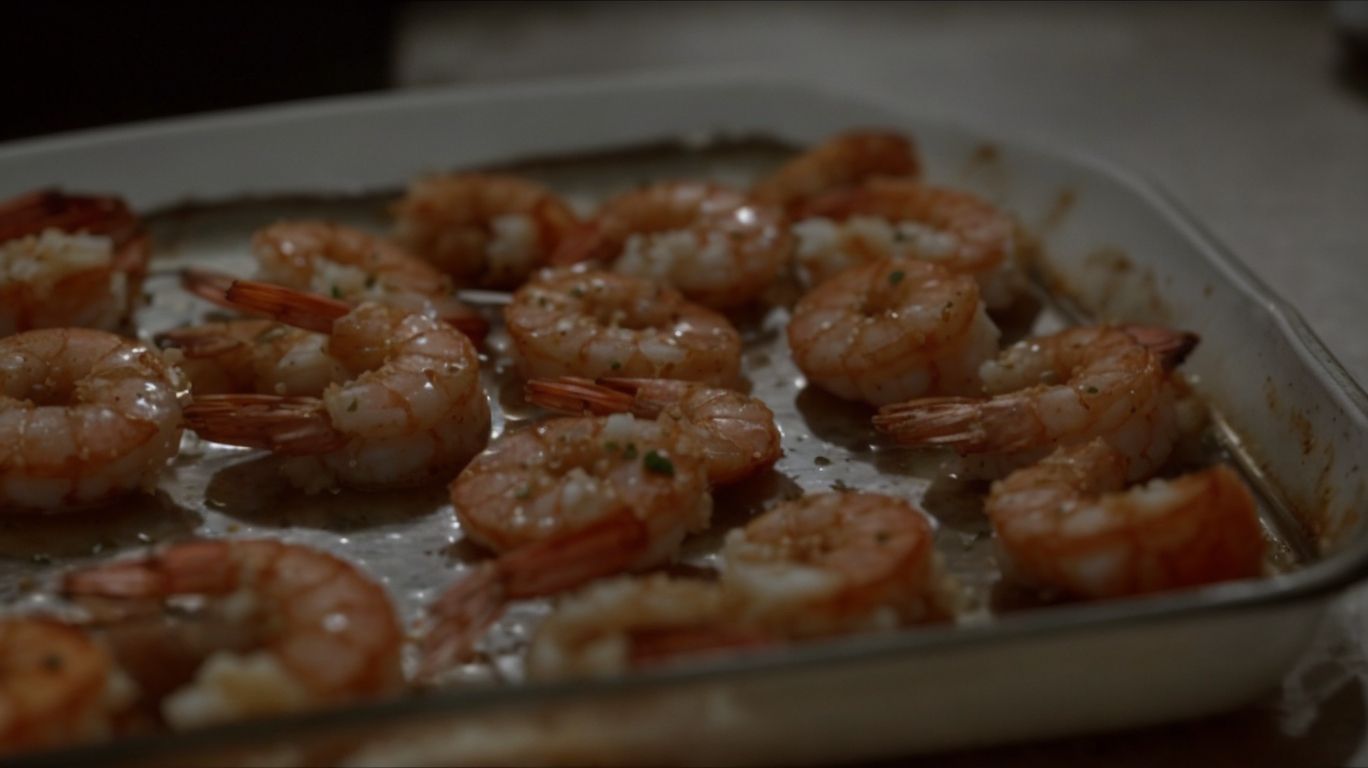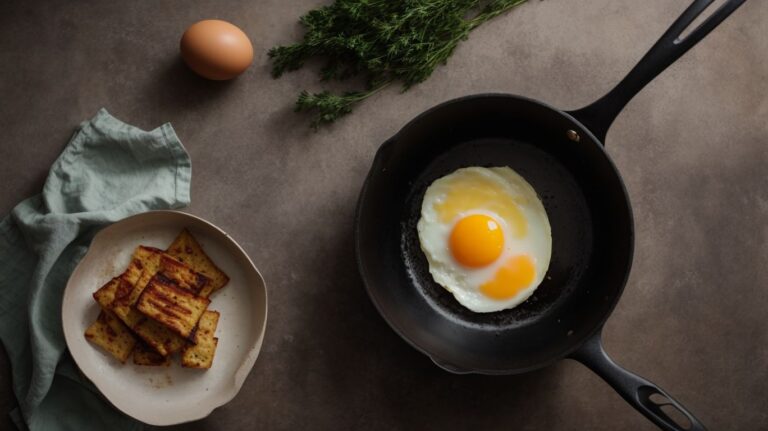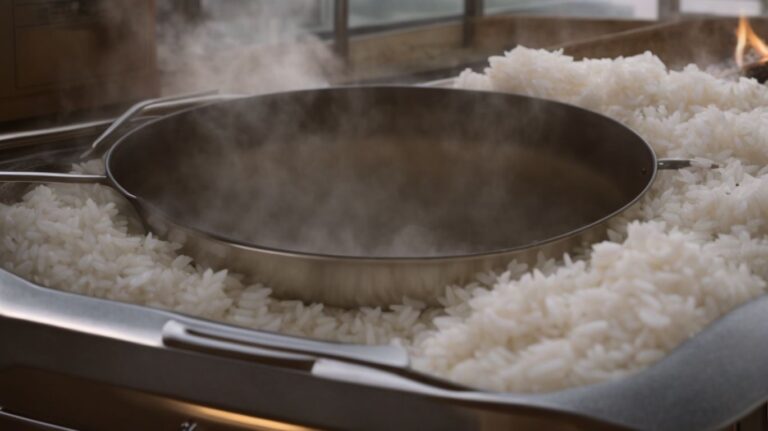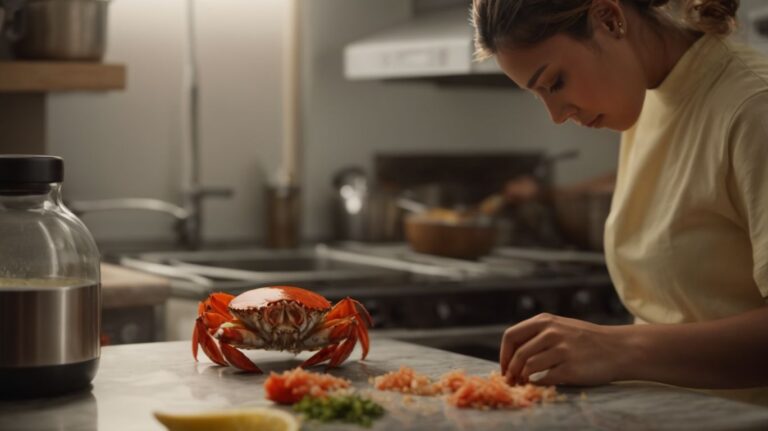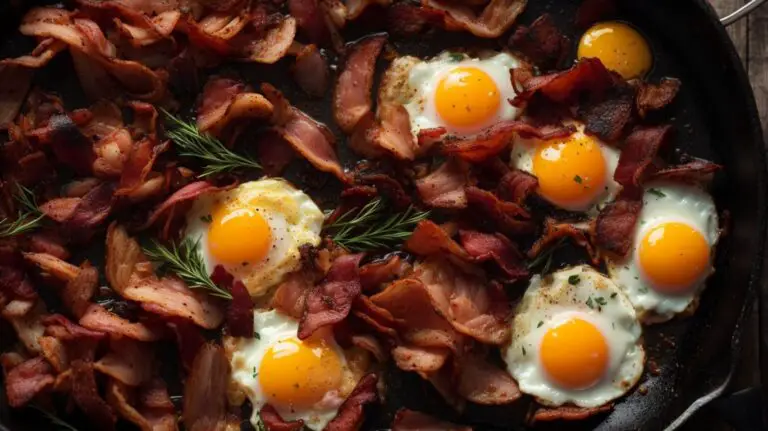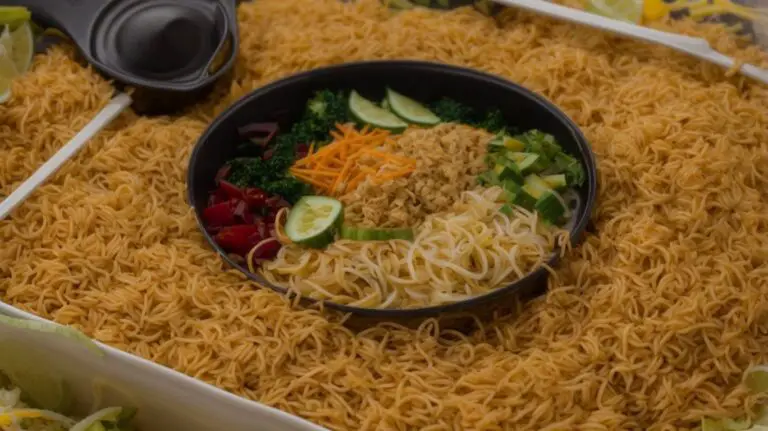How to Cook Shrimp Under Broiler?
Are you looking to elevate your cooking skills and impress your guests with a delicious dish? Look no further!
In this article, we will delve into the art of broiling and focus on how to cook shrimp under the broiler. From prepping the shrimp to ensuring it’s cooked to perfection, we will guide you through each step with expert tips and tricks.
If you’re ready to take your culinary game to the next level, keep on reading!
Key Takeaways:
What is Broiling?
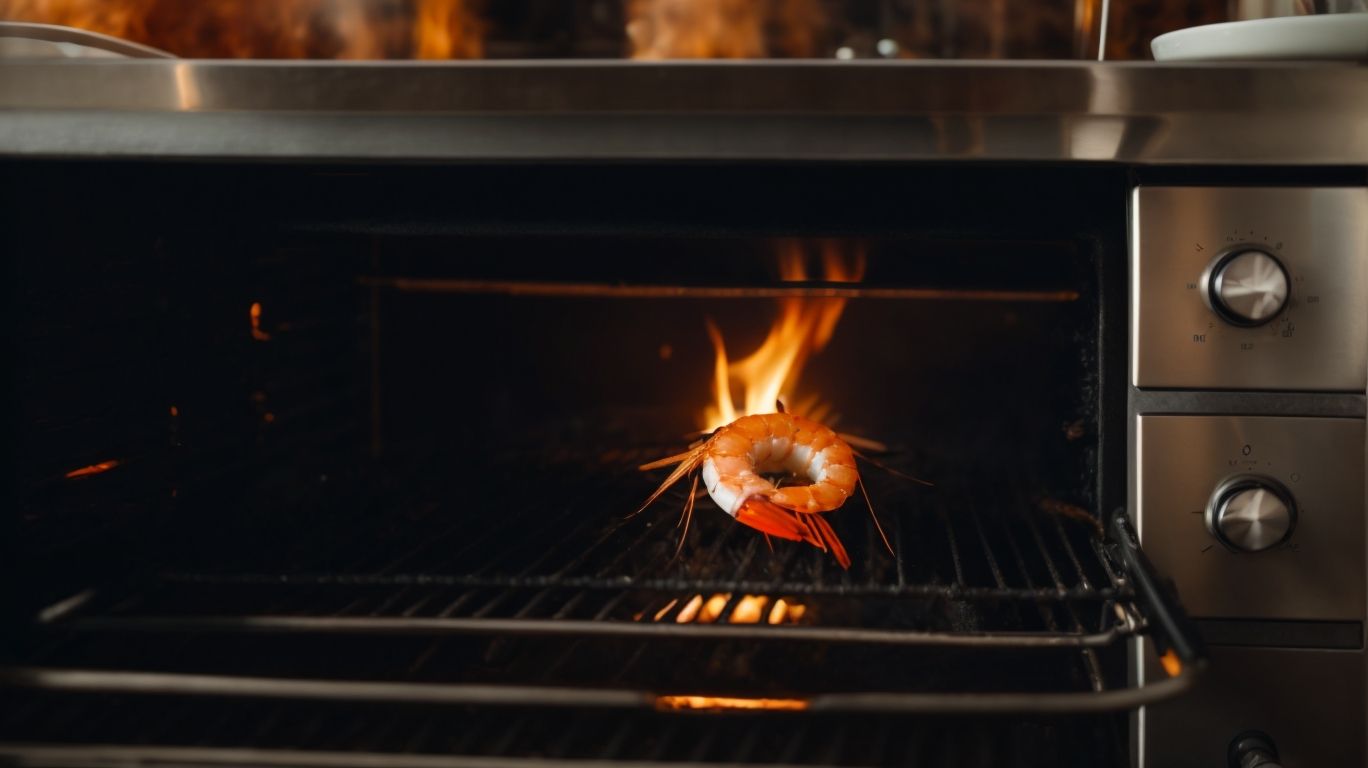
Credits: Poormet.Com – Willie Williams
Broiling is a cooking method that involves exposing food, such as shrimp, to direct heat, typically from an oven’s top element.
This cooking technique works by cooking the shrimp quickly at high temperatures, resulting in a slightly charred exterior while keeping the interior moist and flavorful. By placing the shrimp close to the broiler’s heat source, the intense heat sears the surface of the shrimp, locking in juices and flavors.
- Broiled shrimp is a popular dish known for its quick preparation time and delicious results. The direct heat from the oven’s broiler cooks the shrimp evenly and creates a caramelized crust that enhances the flavor.
- To broil shrimp, you will need a broiler pan or a baking sheet lined with aluminum foil to catch any drippings. Ensuring that the shrimp are in a single layer allows them to cook evenly and receive direct heat exposure for optimal results.
How Does Broiling Work?
Broiling works by utilizing high heat from the oven’s top element to cook food, such as shrimp, quickly and create a caramelized outer layer while retaining moisture inside.
When broiling shrimp, the high temperature of the oven’s top element sears the surface of the shrimp almost instantly, locking in juices and flavors. This intense heat also causes a rapid Maillard reaction, resulting in a beautifully golden crust on the outside of the shrimp.
It’s crucial to keep a close eye on broiled shrimp as they cook, as the process is fast-paced, and overcooking can lead to tough, rubbery shrimp. The key to perfectly broiled shrimp is timing and vigilance – a minute too long can make all the difference.
What Types of Food Can Be Cooked Under Broiler?
A variety of foods can be cooked under the broiler, including shrimp, fish fillets, scallops, and vegetables like bell peppers and asparagus.
Regarding seafood, shrimp and fish are popular choices for broiling. Shrimp cooks quickly under the intense heat of the broiler, resulting in a deliciously succulent texture. Fish fillets, such as salmon or tilapia, are also perfect for broiling as the high heat helps seal in moisture, creating a flavorful dish. As for vegetables, bell peppers char beautifully under the broiler’s flames, enhancing their natural sweetness. Asparagus spears, when broiled, develop a slight char that adds depth to their earthy flavor.
How to Prepare Shrimp for Broiling?
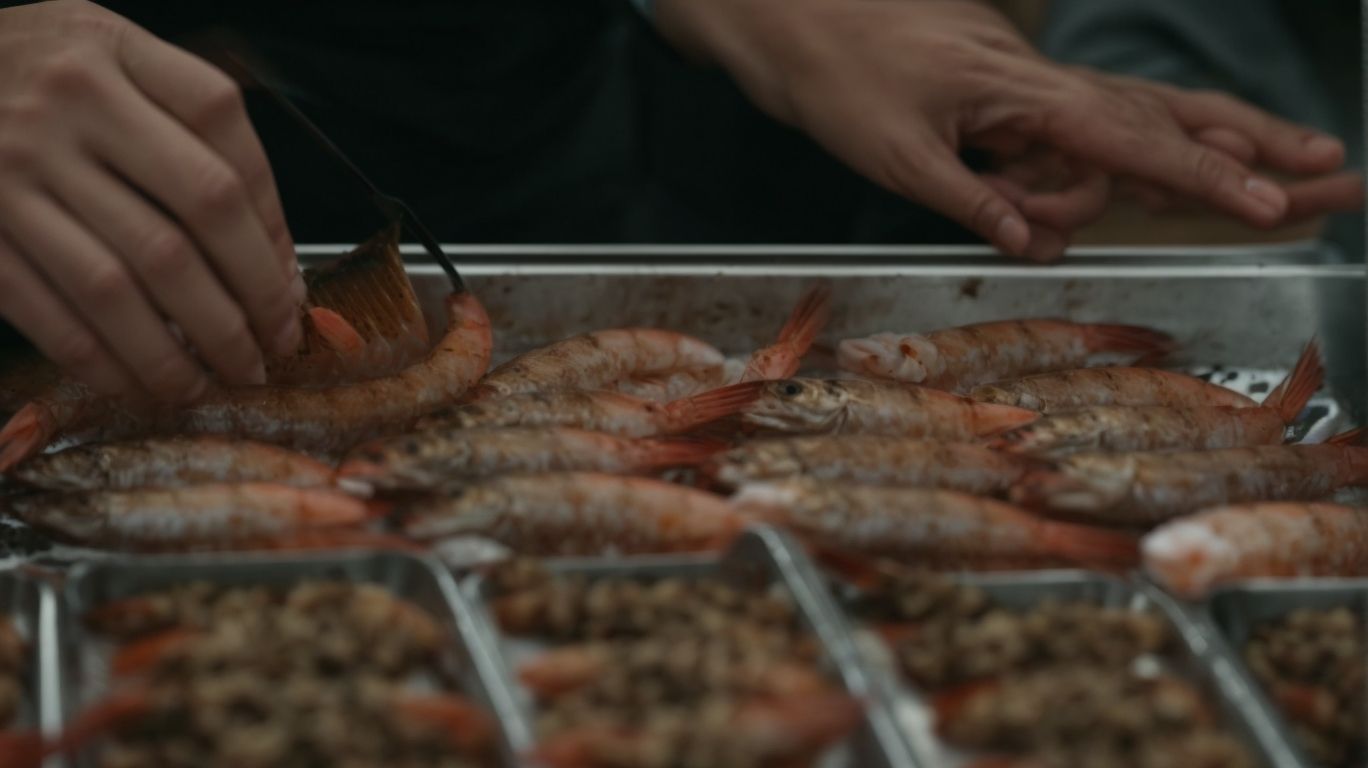
Credits: Poormet.Com – Larry Green
Preparing shrimp for broiling involves seasoning them with a blend of ingredients such as garlic, lemon, olive oil, and breadcrumbs for enhanced flavor and texture.
Before seasoning the shrimp, it is essential to clean and devein them properly to ensure a fresh taste. You can start by rinsing the shrimp under cold water and removing the shell and deveining them. Once cleaned, pat them dry with paper towels.
Next, in a bowl, mix together minced garlic, freshly squeezed lemon juice, a drizzle of olive oil, and a sprinkle of salt and pepper to create a flavorful marinade for the shrimp.
Coat the cleaned shrimp with this flavorful marinade and let them marinate for about 15-30 minutes to allow the flavors to penetrate the shrimp.
Should You Peel and Devein Shrimp Before Broiling?
Peeling and deveining shrimp before broiling is recommended to enhance presentation and remove the digestive vein, improving the overall eating experience.
This process not only enhances the visual appeal of the dish but also ensures that the shrimp are free from any gritty texture or undesirable flavors that the vein may contain.
To peel the shrimp, gently grasp the legs and shell at the top near the head, then peel away in a twisting motion to remove the shell. For deveining, use a small paring knife to make a shallow cut along the back of the shrimp, exposing the vein. Simply lift it out with the tip of the knife or rinse it under cool water for a clean finish.
How to Season Shrimp for Broiling?
Seasoning shrimp for broiling involves combining ingredients like garlic, lemon, olive oil, and breadcrumbs to create a flavorful and aromatic coating that enhances the natural taste of the seafood.
Garlic, with its pungent aroma and rich taste, infuses the shrimp with depth and complexity. When combined with the zesty freshness of lemon, it brightens the dish and adds a tangy kick that balances the richness of the shrimp.
Olive oil, known for its smooth texture and fruity undertones, serves as the perfect medium to bind the flavors together, ensuring that every bite is moist and succulent. The breadcrumbs, when toasted to a golden brown, provide a satisfying crunch that contrasts beautifully with the tender shrimp.
Mastering the art of seasoning is crucial to achieving a well-balanced dish that tantalizes the taste buds. By harmonizing the flavors of garlic, lemon, olive oil, and breadcrumbs, you can create a shrimp dish that is both delicious and memorable.
Steps to Cook Shrimp Under Broiler
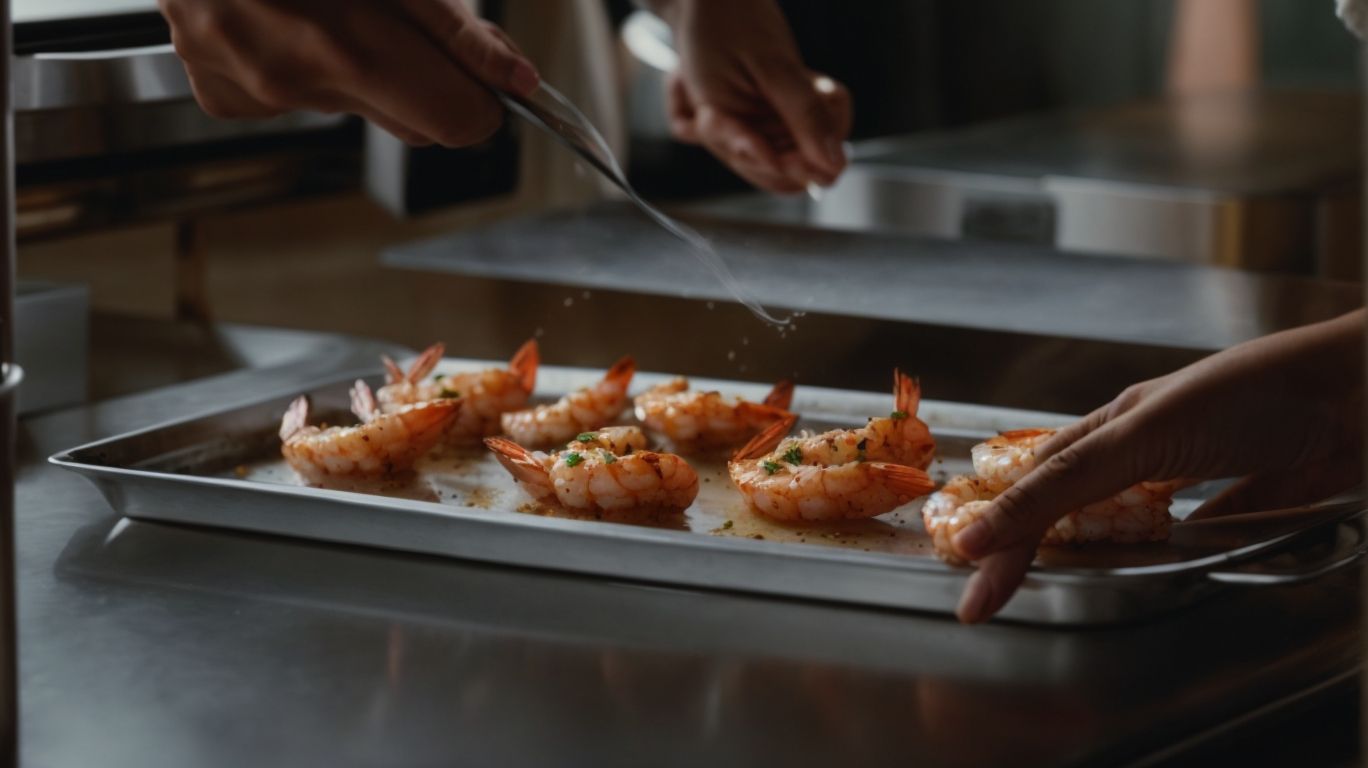
Credits: Poormet.Com – Steven Jones
Cooking shrimp under the broiler involves preheating the oven, preparing the shrimp with seasoning, arranging them on a broiling pan, and broiling for a specific cook time until they are crispy and cooked through.
Preheating the oven is crucial as it ensures that the shrimp are cooked evenly. When seasoning the shrimp, consider using a mix of olive oil, garlic, lemon juice, and Old Bay seasoning for a flavorful touch. Properly arranging the shrimp on the broiling pan allows for even cooking and optimal browning. Monitor the cook time carefully to avoid overcooking; typically, broiled shrimp cook in about 4-6 minutes per side depending on their size. To achieve the desired texture, aim for a nice golden-brown exterior while ensuring the shrimp are tender and juicy inside.
Step 1: Preheat the Broiler
The first step in cooking shrimp under the broiler is preheating the oven to ensure it reaches the required high temperature for effective broiling.
Preheating the oven is essential because it allows the cooking environment to reach the optimal temperature quickly, ensuring that the shrimp cooks evenly and develops a delicious caramelized exterior. When preheating, set the broiler to the highest temperature setting available, usually around 500°F (260°C), to create the intense heat needed for broiling. This initial high heat exposure results in a quick sear on the shrimp, sealing in moisture and flavors. Without proper preheating, the shrimp may not cook consistently or achieve the desired texture, so it’s a crucial starting point for successful broiling.
Step 2: Prepare the Shrimp
Preparing the shrimp involves seasoning them with a flavorful blend of ingredients like garlic, lemon, and olive oil to enhance taste before broiling.
It is crucial to ensure that the shrimp are evenly coated with the seasoning mixture for consistent flavor distribution.
To achieve this, gently toss the shrimp in a bowl with the ingredients, ensuring each piece is properly covered before placing them on a broiling pan. The garlic infuses a rich aroma, the lemon adds a refreshing zest, and the olive oil brings a hint of richness to the dish.
Taking the time to season the shrimp thoroughly will result in a delightful burst of flavors with every bite.
Step 3: Arrange Shrimp on a Broiling Pan
Arranging seasoned shrimp on a broiling pan evenly ensures that each piece cooks uniformly under the high heat of the broiler for consistent results.
When placing the shrimp on the broiling pan, ensure there is ample space between each piece to allow the hot air to circulate efficiently, aiding in even cooking. It’s crucial not to overcrowd the pan, as this can lead to steaming rather than proper broiling. By positioning the shrimp in a single layer with a bit of spacing, you allow them to develop a beautiful color and a delightful crust.
Step 4: Broil the Shrimp
Broiling the seasoned shrimp involves placing the pan in the oven under the broiler element and cooking them for a specific time until they acquire a crispy, golden exterior.
During the broiling process, it is imperative to keep a close eye on the shrimp to avoid overcooking, which can result in a tough texture.
The cook time typically ranges from 3-5 minutes per side, depending on the size of the shrimp and the distance from the broiler element.
A key visual cue to look for is a vibrant pink color and a charred edge, indicating they are ready.
Remember that the shrimp continue to cook slightly even after removing them from the broiler, so slight undercooking can be beneficial.
How Do You Know When Shrimp is Cooked?
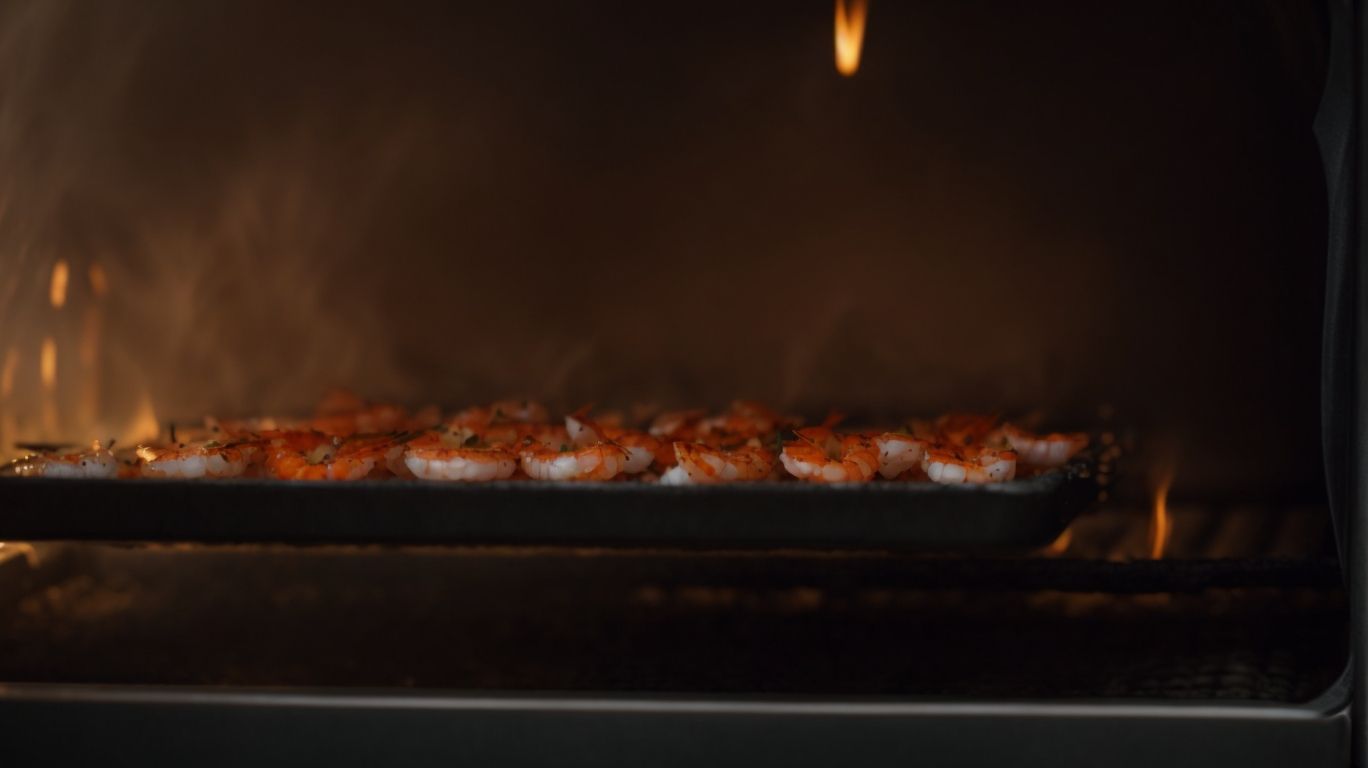
Credits: Poormet.Com – Wayne Green
Determining when shrimp is cooked involves observing changes in color, texture, and firmness, with a translucent appearance turning opaque and a firm, slightly springy texture indicating doneness.
When cooking shrimp, it is crucial to pay attention to the transformation occurring. As heat penetrates the shrimp, the once grayish-pink color changes to a vibrant pink or orange hue, signaling the cooking progress. The texture of the shrimp evolves from soft and almost jelly-like to a more solid, resilient feel, denoting that the proteins have coagulated and the shrimp is cooked through. The cook time can vary depending on the size of the shrimp, but a general rule is to cook them until they curl and form a loose ‘C’ shape.
What is the Recommended Cooking Time for Shrimp?
The recommended cooking time for shrimp under the broiler varies based on factors like shrimp size, oven temperature, and desired level of doneness, typically ranging from 4-6 minutes.
When cooking shrimp, it is essential to consider that larger shrimp will require a slightly longer cook time than smaller ones due to their thickness and density. Higher temperatures will result in quicker cooking times, but it’s crucial to monitor closely to prevent overcooking and maintain juicy tenderness. It’s generally advisable to aim for an internal temperature of 145°F (63°C) to ensure safe consumption without sacrificing flavor or texture. By following these guidelines, one can achieve perfectly cooked shrimp under the broiler every time!
How to Check if Shrimp is Cooked?
Checking the doneness of shrimp involves using a thermometer to ensure they reach an internal temperature of 120°F-145°F or by observing their color change and texture transformation for signs of being fully cooked.
When using a thermometer, insert it into the thickest part of the shrimp without touching the shell. The cool time for shrimp is typically short, only 2-3 minutes per side if cooking on a stovetop. You can also look for visual cues such as the shrimp turning pink and opaque. Overcooked shrimp can become tough and rubbery.
For grilled shrimp, consider the indirect heat method on a medium heat grill, which helps prevent overcooking. It is essential to avoid raw or undercooked shrimp due to the risk of foodborne illnesses.
Tips for Cooking Shrimp Under Broiler
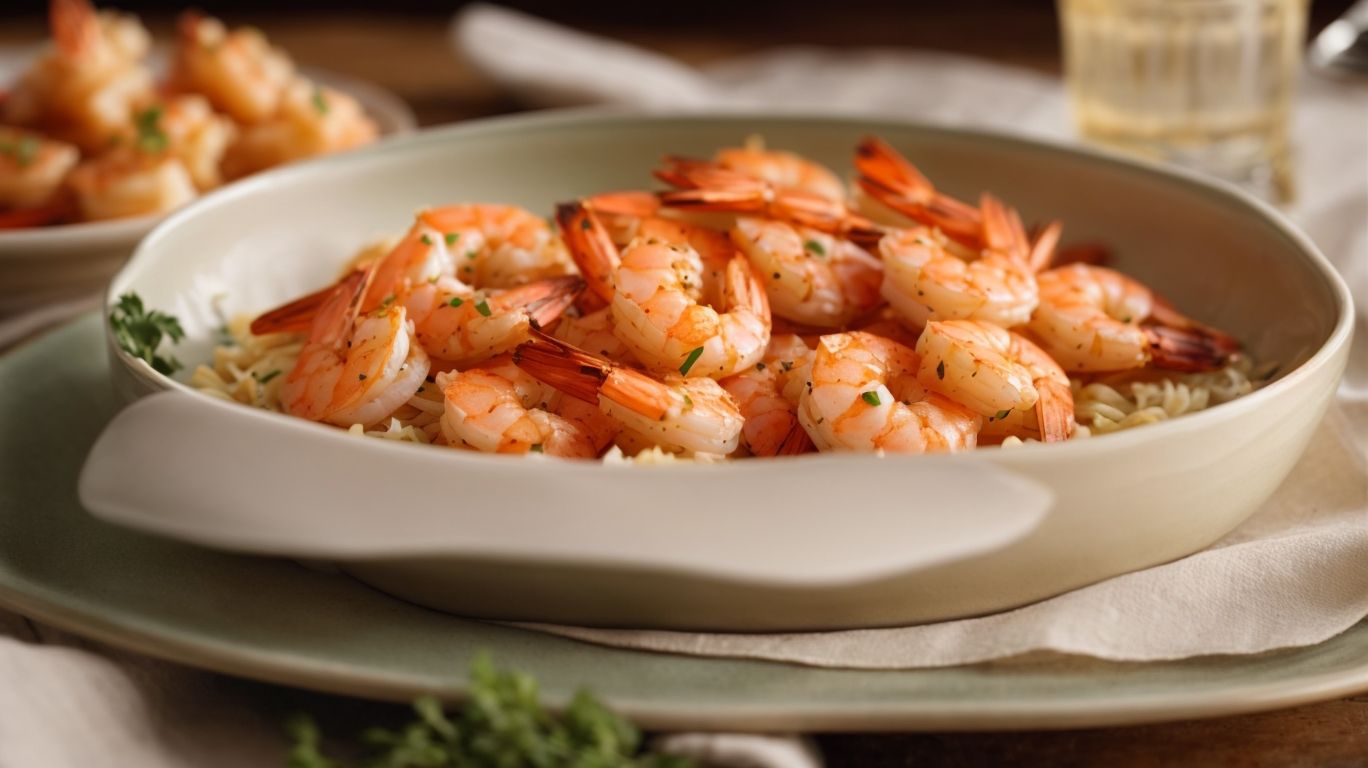
Credits: Poormet.Com – Scott Young
To prevent overcooking, it’s recommended to monitor shrimp closely, avoid overcrowding the pan, and brush them with a flavorful glaze during broiling for enhanced taste.
When monitoring the shrimp, keep a close eye on them as they can quickly go from perfectly cooked to overdone. Overcooking not only impacts the texture but also the taste, making the shrimp tough and dry.
Ensure the shrimp are arranged in a single layer in the pan to allow even cooking and prevent them from steaming instead of broiling.
For added flavor, consider marinating the shrimp beforehand or using a mixture of herbs and spices to brush on during cooking.
Remember, broiling is a quick cooking method, so be attentive to prevent the shrimp from burning.
How to Prevent Shrimp from Overcooking?
Preventing shrimp from overcooking requires vigilant monitoring during the broiling process, adjusting time as needed to ensure they reach ideal doneness without becoming dry or tough.
When broiling shrimp, it is crucial to keep a close eye on them as they cook. Shrimp can quickly go from perfectly succulent to rubbery if left unattended, so monitoring becomes a key factor in achieving the desired result. Looking for visual cues such as a vibrant color change to pink and a firm texture can help determine when they are ready. Being ready to make prompt adjustments to the cooking time based on these visual indicators is essential for achieving consistently delicious shrimp dishes.
How to Get a Nice Broiled Finish on Shrimp?
Achieving a visually appealing broiled finish on shrimp involves brushing them with a glaze made from ingredients like butter, lemon, and herbs before broiling to enhance their appearance and flavor profile.
One popular technique for creating a stunning finish on broiled shrimp is to mix together melted butter, freshly squeezed lemon juice, and a variety of finely chopped herbs like parsley or dill.
The combination of these ingredients not only adds a delicious flavor to the shrimp but also imparts a beautiful sheen and color to the dish during the broiling process.
You can experiment with different glaze variations by incorporating ingredients such as honey, soy sauce, garlic, or even a touch of chili paste to create a unique and mouthwatering flavor profile.
Conclusion
In conclusion, broiling shrimp allows for quick cooking with flavorful results, making it a versatile and convenient method for preparing this seafood favorite.
One of the key highlights of broiling shrimp is its efficiency in terms of cooking time, making it ideal for busy weeknights or quick meals. By broiling, the shrimp cook swiftly under high heat, locking in their natural juices and preserving their succulent flavor. This method not only enhances the taste but also retains the delicate texture of the shrimp, resulting in a delightful eating experience.
Another advantage of broiling shrimp is its versatility in culinary applications. Whether marinated, seasoned, or served plain with a squeeze of lemon, broiled shrimp pairs well with various side dishes, salads, or pasta, adding a savory touch to any meal. Because broiling requires minimal added fats, it offers a healthier cooking option without compromising on taste.
The efficiency, flavor retention, and adaptability of broiled shrimp make it a go-to choice for seafood lovers looking for a quick, delicious, and satisfying dish.
Frequently Asked Questions
How to Cook Shrimp Under Broiler?
1. What equipment do I need to cook shrimp under the broiler?
The only equipment you need is a broiler pan or a sheet pan lined with aluminum foil. You can also use a cast iron skillet if you do not have a broiler pan.
2. Do I need to devein the shrimp before broiling?
Yes, it is recommended to devein the shrimp before broiling as it can affect the texture and taste of the shrimp.
3. How long does it take to cook shrimp under the broiler?
It usually takes 4-5 minutes for medium-sized shrimp to cook under the broiler. Larger shrimp may take a few minutes longer.
4. Can I use frozen shrimp for broiling?
Yes, you can use frozen shrimp for broiling, but make sure to thaw them first and pat them dry before cooking.
5. How can I prevent the shrimp from overcooking under the broiler?
To prevent the shrimp from overcooking, keep a close eye on them and check their doneness frequently. Shrimp are done when they turn pink and opaque.
6. Can I use different seasonings and sauces for broiling shrimp?
Absolutely! You can use your favorite seasonings and sauces to add flavor to your broiled shrimp. Just make sure to adjust the cooking time accordingly.

